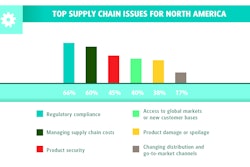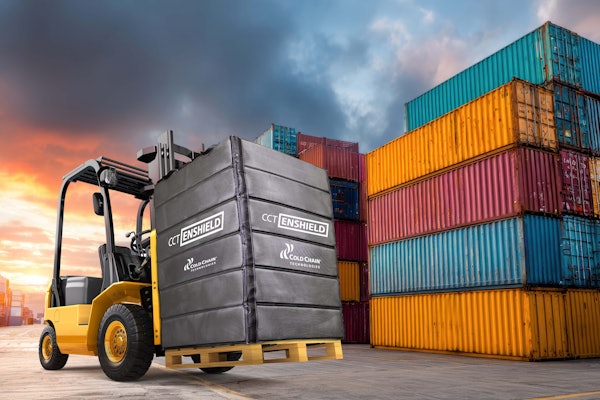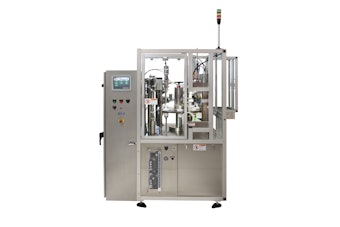1. Identify the specific regulations you are complying with, keeping in mind that this is somewhat of a moving target.
2. Define your current processes. By conducting a thorough review of your current processes and systems, you will be in a better position to start hammering out your roadmap. Consider leveraging experienced subject-matter experts to define requirements independent of vendor solutions and to share lessons learned.
3. Review technology implications. Does the technology team understand the standards they need to support (such as GS1)? Can multiple standards be supported before and after they are merged? Has the technology team identified and coded internal and external product movement events for EPCIS? Before you integrate, are any legacy systems due for replacement in the next three to five years (ERP, WMS, MES)? How will you respond to e-pedigree and supply chain queries?
4. Map out how your processes will change. Will each aggregation hierarchy be handled by the same data carrier, or will it vary by item, case, and pallet? How will exceptions be managed internally and externally (e.g., rework, returns, recalls)? Will it be necessary to support randomized serial numbers? How will serial numbers be commissioned and aggregated? How will disaggregation, decommissioning, and reporting work?
5. Understand how trading partners fit in. Have you identified all the parties with whom you need to exchange serialized data? Have you decided how you would like to receive serialized data from trading partners? Have your trading partners decided how they would like to receive data from you? Do you have business systems that will support the exchange of serialization information? Do your trading partners have systems to support new standards such as EPCIS, or should more time-tested standards be used, such as EDI? How will differing customer and country-specific requirements be accommodated?
6. Map out your adoption of GS1 standards. The industry is moving toward adoption of GS1 standards for serialization. If that’s the track you’re taking, are your FDA Labeler Codes registered with GS1? Identify what resources will be available to assign SGTINs and SSCCs. How many will be required? What resources are available to track down the physical and accurate addresses for every trading partner, supplier, and customer to assign GLNs? Determine whether internal GLNs will be utilized for tracking of product movement from ingredients through shipping of finished product. What’s the timeline to completion of adopting GS1 in the context of the larger serialization project? What dependencies are there?
7. From a regulatory standpoint, decide what will be handled in-house vs. outsourced. Some companies maintain in-house resources to keep up with regulatory changes with regard to serialization. Others subscribe to third-party subscription services or use independent subject-matter experts who may be advising multiple companies. Consider augmenting the global regulatory team with representatives in key regions who speak local languages and who can develop relationships with local regulators and GS1 member offices. Share what kind of data will be managed and archived with your regulatory and risk management departments. As with all new systems, additional data may bring along with it additional responsibility in the areas of validation, authorization, and response to data changes in transactions.
8. Identify factors that will influence technical architecture. Look closely at the impact of data volume, especially from the packaging-line level all the way up through the enterprise and supply chain. Tabulate the GTIN/SKUs, lines, plants, and the total volume of items, cases, and pallets. Serialization generates an enormous amount of data, and with it, the task of managing it properly. Cases and pallets may not have GTIN or SSCC now, but may need them for serialization. Look at the regulatory requirements: What are the processes, reporting formats, and consolidation requirements? Decide whether to handle the connectivity to different parties internally or by relying on third-party data connectivity vendors such as Tracelink.
9. Determine when to start serializing for real. When you outfit a line for serialization, you need to determine when you will want to start producing actual serialized product in order to comply with regulations. Due to product shelf-life considerations and distribution cycles, you may not need to start producing serialized product until well after the line is ready. As a rule of thumb, a good time to start serializing is when your downstream partner is ready to start receiving the data. Consider earlier serialization on cold chain and small items.
10. Create your own serialization playbook. Create a playbook for implementing serialization that is specific not only to your own company, but also to specific types of manufacturing sites or trading partners. The first playbook will take the longest to construct because you are starting from scratch. But then you have a document you can take with you to the next site or partner, which spells out all the process changes, and specifies the validation scripts, training requirements, etc. Any of these can be modified for that subsequent site.
11. Don’t shoot from the hip. There are horror stories in the industry of companies that have picked vendors, bought technology, and then started hemorrhaging cash because they didn’t have an end-to-end plan. In one example, the IT folks were fashioning IT strategy in a vacuum without talking to packaging and regulatory departments. Meanwhile the packaging engineering team was out buying equipment without talking to IT. Without a team in place and a plan to follow, internal politics sunk the project, and the equipment had to be completely discarded. True story.
Liked this article? Download the entire playbook here.






















